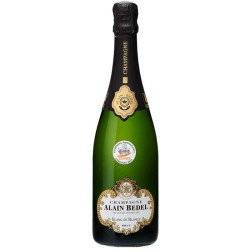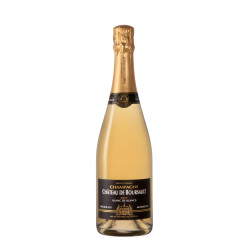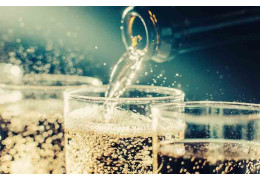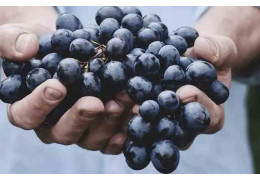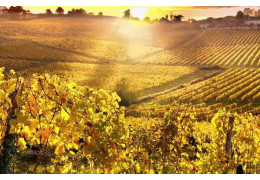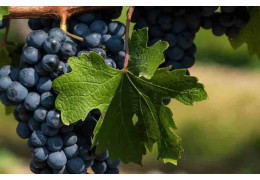Unbeatable !
HOW IS CHAMPAGNE PRODUCED?

The Art of Crafting Champagne
The Prestige of Champagne
Champagne! The cork pops, the flutes clink, and joy permeates the tasting experience. Known for bestowing sparkling wines with their noble status, Champagne is a symbol of refinement and celebration. This controlled designation of origin is often misused to describe any sparkling wine. This extraordinary fate is remarkable considering that, in the past, bubbles were seen as a flaw and that many other sparkling wines, such as crémants, offer similar characteristics. How is Champagne made, and what gives it its esteemed reputation and craftsmanship? How did Champagne producers manage to create a delicate beverage from what was initially considered a defect? Rooted in a story that highlights the passion and skill of Champagne winemakers, Champagne is also the result of a unique method: the traditional method.
The History of Champagne Production
The history of sparkling wines dates back quite far. The earliest written mention of a sparkling wine is from October 23, 522, originating from Egypt. This text lists reasons for canceling a sale, noting that the presence of secondary fermentation creating bubbles was considered an accidental flaw. Since then, our beloved bubbles have traveled a long way. They appear in medieval references, ranging from poems singing their praises to objective descriptions of their effervescence, and even a medical warning from an Italian doctor. While some doubted it, and some loved it, sparkling wine was known but not highly sought after.
It was in Champagne that deliberate and sought-after craftsmanship first emerged between 1670 and 1690. A new chapter in the history of sparkling wines was written there. The Champagne winemakers developed specific techniques that propelled them to fame. They then achieved unprecedented success in England and France. In their early days, their techniques allowed only a few bottles to be produced, reserving Champagne tasting for the aristocracy. Thus, the chic and distinguished image of Champagne was born.
The traditional method, developed through the experiences and expertise of the Champagne region, was established at the end of the 17th century. To protect its authenticity, winemakers formed syndicates in 1904 and secured the delimitation of Champagne viticulture by the law of July 22, 1927. It was officially recognized as an appellation d'origine contrôlée in 1935. Despite the existence of other sparkling wines like crémants, the prestige created by this region remains unique. Champagne is a pioneering region in this field, holding a heritage of ancestral expertise.
Key Stages of Champagne Production
So, what is this secret achieved over centuries? What are the stages and how is Champagne made? From the vines to the glass, its unparalleled journey is complex and subtle. It begins in the vineyards of the region with the cultivation of traditional grape varieties and their harvest. From this harvest, the work of the Champagne winemaker begins.
First Stage: From Grape to Glass
Pressing
In Champagne, the juice is primarily obtained from the region's key grape varieties: Pinot Noir, Pinot Meunier, and Chardonnay. Pressing must be done immediately after picking and with whole bunches. It should be done gradually with a low yield to extract the best from the grapes and ensure their origin. The obtained juices are then clarified and sent for fermentation. At this stage, it is possible to keep the skin of black grapes to color the juice and prepare a rosé Champagne.
Vinification
In Champagne, several fermentations follow. The first is vinification or alcoholic fermentation. Yeasts absorb sugar and produce alcohol and carbon dioxide. This stage defines many characteristics of the wine. While not necessary, a second fermentation can be triggered after this initial step to achieve smoother and riper aromas, known as malolactic fermentation.
Second Stage: Blending, When the Winemaker Enhances the Terroir
Champagnes are traditionally made by blending different cuvées. Through the selection and blending of cuvées, the winemaker reveals the terroir and their talent with creativity. The winemaker can play with different crus, grape varieties, and vintages in the blend to shape the personality of their Champagne. Traditionally, Champagne is created by blending different cuvées and vintages, as seen with most bottles like brut Champagnes. However, specific bottles can be made by blending similar cuvées. When using a single year, a vintage Champagne is produced; when using a single grape variety, a Blanc de Blancs (100% Chardonnay) or Blanc de Noirs (100% Pinot) is obtained; and when using a single cru, it highlights a particular terroir. At this stage, blending a red Champagne wine with a still white wine is another option to create a rosé Champagne.
Third Stage: Secondary Fermentation and Aging
Tirage
Once the blend is defined, it is bottled with the addition of beet or cane sugar and yeasts. These yeasts and sugars trigger another fermentation in the bottle. Over six to eight weeks, the carbon dioxide released from this closed fermentation creates the effervescence.
Aging
After the secondary fermentation, the bottle ages in the cellar for a minimum of 15 months. This maturation, known as aging on lees, allows the yeasts to break down and interact with the wine. The imperfect seal of the tirage cork allows a slight amount of air to enter. These two chemical processes help develop more complex tertiary aromas.
Fourth Stage: Disgorging and Dosage
Riddling and Disgorging
After a long resting period, the yeasts accumulate at the bottom of the bottle. It must then be riddled through a precise movement, with the neck downward in a position called "sur pointe." Once the sediments are concentrated in the neck, it is frozen and quickly ejected from the bottle to preserve the effervescence.
Dosage: Sweet or Dry?
To fill the bottle after the sediment is ejected, the winemaker adds a dosage liqueur. This liqueur varies in sugar content and determines the type of Champagne produced. A sweet Champagne will have a higher sugar content than a dry Champagne. Finally, the bottles are sealed, shaken to ensure homogeneity, inspected for clarity, and returned to the cellar for a few more months before being released for sale.


